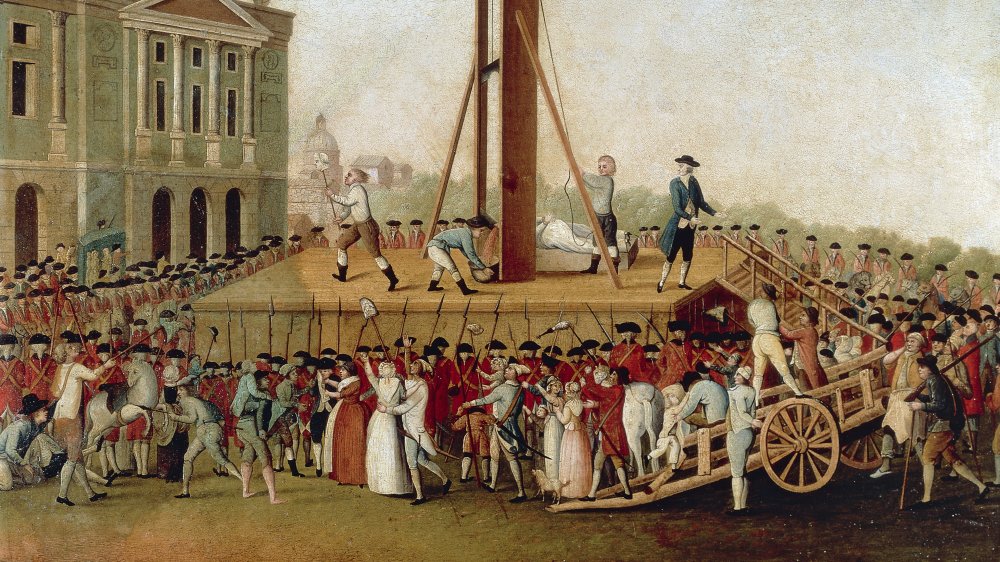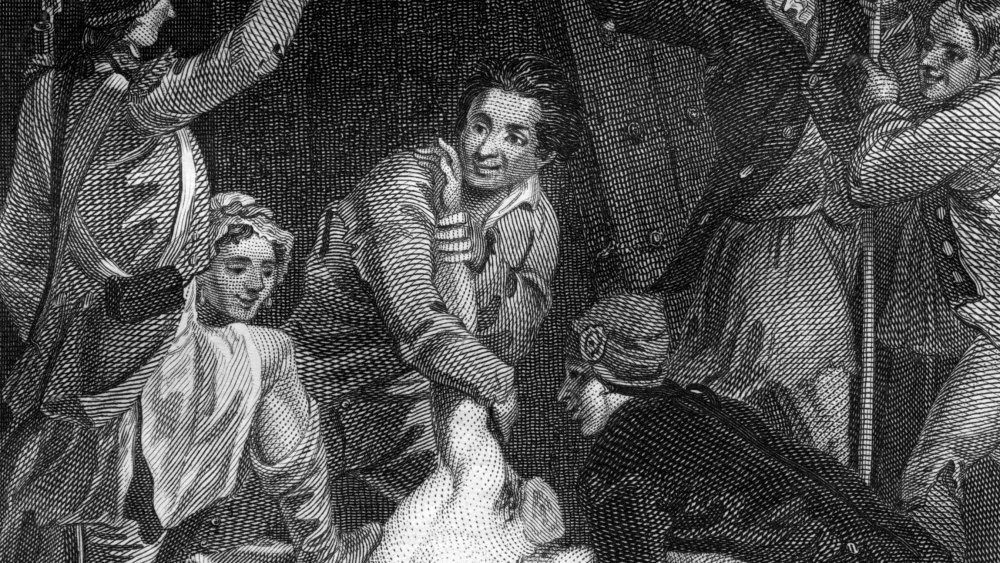The Tragic Death Of Marie Antoinette's Best Friend
Blood had already suffused the air of Paris on September 3, 1792 when Marie Thérèse Louise — Princess of Savoy and Superintendent of the Household to the Queen — stepped forward to meet the Tribunal. It was the second day of what would become known as the September Massacre, and over a thousand had already been executed by the French revolutionaries.
As depicted in the book The Princess De Lamballe: a biography by B. C. Hardy, it is said that Marie Thérèse Louise professed to having no knowledge of the plots from August 10th — when Swiss mercenaries defending the king killed hundreds of revolutionaries — but when asked to swear "to Liberty and Equality, and hatred of the King and Queen," she refused, stating that while she could agree to the former, she could not do so with the latter, as "it not in my heart." In response, the judge ordered her to be set at liberty ... which, in this case, meant death.
To understand how this all came to be, though, it's important to first look at how the relationship between Marie Thérèse Louise and Marie Antoinette began.
Drama!
The loyalty displayed by Marie Thérèse Louise belied the friendship she actually had with Marie Antoinette. When Antoinette first married the future Louis XVI, the young dauphine began to find companionship with the Princess Marie Thérèse in her quieter hours, according to Hardy. Marie Thérèse was of a shyer, more nervous disposition, but this did not stop Marie Antoinette from regarding her as close as a relative and treating her as inseparable, so much so that she'd exclaim to her husband "Ah, sire, the Princess de Lamballe's friendship is the charm of my life."
This closeness continued into the reign of Marie Antoinette's husband, showing itself in her decision to award her friend the title of Superintendent of the Household to the Queen. As time passed, however, Marie Antoinette's more fickle and frivolous characteristics came to the fore and in 1775, she found a new favorite in the extravagant Duchess of Polignac, a polar opposite to Marie Thérèse. As Hardy wrote: "[Marie Antoinette] realized that it might not be easy to keep both friends on equal terms, and for the moment, from sheer novelty, the Comtesse excited and interested her the most. Thus [Marie Thérèse] had scarcely won the long struggle for her Superintendent of the Household before she began to wish it undone."
Marie Thérèse would hold her position hereafter, but Marie Antoinette would treat her with decorum, not devotion.
A story inked in blood
As dramatic as the French Revolution was, the Tribunal had no interest in drama. Instead, they sentenced Marie Thérèse Louise to death, at the hands of the crowd. Hardy describes how a young man stuck a pike through her hair, impaling her head, before the mob tore at her clothes and threw her body upon the pile of corpses as "'naked and beautiful as God made her." Other descriptions revel in more violent images. In Blood of Revolution, Erik Durschmied voyeuristically lays out a scene in which, after being forced into a confession of lesbian intercourse with Marie Antoinette, "Dozens of grimy men then raped her and forced her to walk across the mutilated corpses in the courtyard before a sans-culotte hacked off her head. A hairdresser's apprentice combed the Princess's blood-streaked hair, before her head was paraded on a pike outside the Temple prison so that l'Autrichienne [Maire Antoinette] can recognize her lover."
One year later, on October 16, 1793, Marie Antoinette, her once dear friend, was also put to death by the Revolutionary Tribunal, though her body was exhumed from its unmarked grave in 1815 and reburied with respect ... unlike Marie Thérèse Louise, whose body disappeared among the sheer amount of bodies piled up during the executions of the September Massacre.


